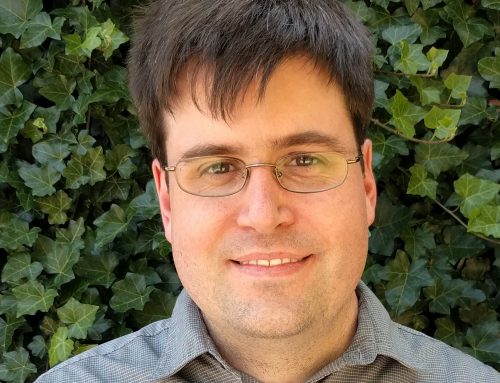A belief is growing that art can change and remake the world, especially in our culture with its industries of television, movies, and international pop and rock music. Art and social theorists argue that art works can, with great social and political effect, alter the mind and behavior of the world’s masses. But alter the collective mind for what cause? To what end? These are interesting questions, since the postmodern mind adopts such a radical relativism that it hardly permits the notion of a universal “good” for the masses. However, some very influential intellectual circles view art as a “meta-language” capable of communicating above and beyond the boundaries of ordinary, western-biased, discourse. Art, they argue, offers contemporary humankind—fractured into deep national, ethnic, and ideological differences—a new way to think and to communicate.
What are Christians to make of this view of art? Most will write off this concept of “salvation through art” as another silly ideology from “La-la-theory Land.” But regardless of one’s view of this “change-the-world-through-art,” one must grant that art’s role and social impact on today’s culture is immense.
Art’s postmodern, nihilistic images currently dominate the commercial and graphic arts now used in extremely powerful popular arts venues: MTV, Rolling Stone Magazine, and the cover designs for the thousands of rock and pop music albums admired and collected by this so-called “X” generation. For example, the cover design for the recently released best-selling Metallica album, “Load,” is a photo by postmodern photographer and artist Andres Serrano of “Piss Christ” fame. The photo shows a blob of pinkish, reddish fluid splashed and floating across a glassy surface; it is blood and human semen swirled together and splashed across the surface of the CD cover. The impact of postmodern literary and art theory has been massive. And if we are tempted to think, “Whatever postmodernism is, it doesn’t touch my or my kids’ lives,” the CD cover of this immensely popular and influential “metal” band shows that it does and it will. There is an active “flow” back and forth between those who make the music and the images our youth consume and the work of the so-called postmodern avant garde.
From MTV to sitcoms to the fantasies of both high and low brow cinema, contemporary artmaking is profoundly coloring our world’s conscious view of reality. Who can argue that the recent television production on Ellen’s “coming out” as a lesbian didn’t impact millions of viewers’ opinions about the need to socially validate homosexuality as “normal”? This is artfulness at its most potent.
Most Christians today have two responses to the subject of art: 1) they know nothing about it; hence, they care not a wit about it; or 2) what they do know about today’s art world is repugnant to them. As a result, they are openly hostile to the cultural domain of the arts. This circumstance is both understandable and tragic.
The Artful Impulse
Artful things fill and surround our lives. There is a direct, created connection between the “ordinary” enjoyment of a butterfly’s wing, a child’s laughter, the translucent curl of an ocean wave as it catapults to shore and what is called “fine art.” In her wonderful book, Hidden Art, Edith Schaeffer provides biblical insight for understanding that our Creator-God has woven into the fabric of our beings “nuanceful” ways of seeing and “making special” that inevitably work their way out of us. We see this not only in grand projects like designing cathedrals and painting Mona Lisa’s, but in “doings” as ordinary as selecting paint for our kitchens or choosing a style for our hair and clothing.
If I build a house for myself and my family to live in, I will consider two distinct but intertwining dimensions in order of priority. The first is the necessity of adequate shelter and facilities. This dimension of basic needs and engineering asks only one essential question: “Is this building going to meet the physical requirements of my circumstances?” A second question, however, takes us to the human dimension of “artfulness”: “Is this building pleasing?” God created this artful dimension in us. We are artmaking creatures, and even our sin and brokenness have not obliterated the wonders manifest in and around us. We can and should give thanks to God for giving us this artfulness: this creative, playful, decorative, nuanced dimension that every human being experiences.
Some of the Spirit-inspired authors of the Old Testament provide us with examples of this artful dimension. In the Psalms, Hebrew poets speak about God and His “art-full” creation, not in a directly factual manner but in an artful one. They tell us truth in symbols and metaphors: God “covers Himself as with a cloak” and “stretches out Heaven like a tent curtain” (Psalm 104:2). Why don’t the Old Testament poets just point out the “facts” of God and creation: God is big, and the world is full of fish, dogs, birds, lions, water, mountains, trees? Why do the poets go to the “trouble” of casting their observations in language that goes beyond literal communication?
We can answer this question when we carefully observe: 1) what the Bible tells us about our humanness; and 2) human experience and behavior. First, the Bible describes God’s special image-bearing creatures as those gifted with inescapable creative impulses. God assigned Adam the task and gave him the mental ability to name the animals around him. Adam created appropriate names for them from his own imaginative capacity. Second, we humans don’t just work to make our lives safe and secure; we work beyond the necessary to “cultivate” a world to live in. I don’t just make a small stool for my granddaughter; I make a rocking chair with swirling designs in wood and paint. She could do with the stool, and under the constraints of stricter life circumstances (poverty or lack of materials), the stool would suffice. However, as I delight in her, my imagination and creative energies come to bear to make the little chair “special.” This artfulness, under normal healthy life circumstances, forcefully emerges to color and to nuance what we do and make of our lives together. This is the “ordinariness” of what I am calling the artful in our lives.
Our “high” or fine art emerges from this “ordinary” artful impulse. Artfulness is an attribute God has placed in the heart and mind of every one of His human creatures. This attribute manifests itself in the everyday world of decorating our table for a meal, making and telling stories to our children, and noticing the intricate brilliance of the blue-green body of a manure fly. And we also see it in the world of philosophical art, which attempts to say life-altering things to a troubled world trying to cope with ideas and forces that shape lives and nations.
Evangelicals and Art
Christians often have negative or at best mixed opinions about art, especially its contemporary “scene.” Bible-believing Christians are commonsensically correct in their repudiation of both the content and attitude of much of modern and postmodern art. Recently, leaders and innovators in the world of art have been collectively hostile to the art traditions of our Judeo-Christian-based civilization; and the Christian reaction to contemporary art that boasts in a nihilistic vision is rational and biblically sound. The last hundred years of artmaking in our culture has often produced an elitist, radically politicized approach and platform for its philosophical and ideological agendas.
Arthur Danto, Professor Emeritus of Philosophy at Columbia University, recently published a provocative book, After the End of Art, in which he argues that the concept of art as we have known it for six hundred years is dead. The definition and aesthetic of art emerging with the Christian humanism of the Renaissance no longer applies. This tradition of aesthetics, Danto argues, lasted until the mid 1960s when the pop artists resurrected and reapplied the question Marcel Duchamp had teased out in the 1920s: “Who says art can’t be what I say it is?” In essence, these artists and art theorists argued that there are no “canons” for art. Art’s definition, subject matter, method, and message are totally subjective, fictive cultural constructions. Therefore, if an artist like Chris Burden has himself crucified to the top of a VW Beetle and calls this “important art,” we have no grounds to argue with him and his admirers.
Christians must be careful, however, not to “throw the baby out with the bath water.” In cultural areas other than art, Christians have not done that. The same rebellious, secular posture evident in the art world is apparent across the cultural board: from public and higher education, to law, to civil legislation, to the news media. The Christian response to being pushed out of these public, social domains was first to resist and then to retreat from cultural involvement. Then, starting in the 1970s, Christians began to re-engage on these social fronts and even to take back some of the lost cultural territory. For whatever reasons, however, the church has been extremely hesitant to re-engage in the arena of the arts.
The Challenge of Christian Artmaking
The church’s hesitancy toward art, along with the anti-Christian developments in philosophy and practice of art mentioned above, have complicated the calling of the Christian artmaker. In our pursuit of the goodness of God, Christians rightly reject and war against all forms of the Enemy’s ugliness in our world. But making art can be a complex task; to make good, strong art that speaks truth and subverts the lies and evil of the world demands wisdom and much careful thought. On the one hand, Christian artmakers who attempt to convey a biblical worldview to our contemporary culture should accept the challenge of using today’s art-language conventions in order to be heard. On the other hand, Christian artmakers must guard against undercutting and contradicting their calling and their message through the very methods and conventions they use. Christian artists, called to wrestle and to create in the difficult arena of contemporary art, must take care not to be seduced unwittingly from a biblically-grounded artmaking while attempting to use relevant, contemporary art practices.
The art of our pop and postmodern world lays huge challenges before Bible-believing Christians today. Some of us are and will be parents of children gifted and called to work in the arts. Young people entering the world of education and training in the arts will find a difficult, intimidating, and seductive path before them. And Christian parents, generally aware of this, often attempt to steer their children to other vocations. For many parents and children, this denial of art is disastrous. These young people, who have hard-wired into them a deep inclination to study and to make art, often feel that along with being cut off from what they want to do, an important part of who they are is being rejected. This often ends in anger and rebellion. I advocate finding a positive approach. A way for young people to study and to train in the arts must be found, though this can be a challenging and frustrating task; few places exist where Christian faith is nurtured along with arts education. But it can be done. Children called and gifted to make art that displays God’s perspective on reality and the human situation desperately need the wisdom, guidance, and support of their parents. If they do not get it from parents and the church, they may find a worldly way to get the support and encouragement they need.
Our Response to the Artful In and Around Us
The “artful” exists in us all. Artful impulses and expressions abound in our everyday doings, from hosting guests at our dinner table to planting flowers to enliven our yards. And the artful extends from our small, personal uses to very influential art forms containing massively consumed messages that can deeply affect the social fabric within which we and our children must live.
We in the church must not run and hide from art; Christians must not totally abandon the art-driven cultural domains. As we have done in so many other callings and domains of this world—philosophy, science, law, education, politics—the body of Christ should take up the challenge of involving itself in the world of art while striving to build and to hold a biblical foundation for working in its arena of life and influence. Christians need to wisely enter the powerfully influential arts arena and ask God for the grace and wisdom to live as gospel carriers there, too. We can do this. And it would be a great encouragement to our children to see and to hear us do this.
Artmaking has a long and deep history in every culture of the world. Some in the church must learn more about the “modes” of contemporary art. If we take up the challenge of the arts, we will need to “learn the language” so we can “have conversation” with both the art world and our own children.
Many of the most important artists of this century believed that art could save humankind. But art does not save us. It never has. Certainly the Christian church never claimed that art could save us; but that did not stop the church from recognizing the power of art and images to alter consciousness and speak for the cause of the gospel in the world. Not everyone likes what is going on in the arts today. But everyone is artful. I think God intended us to be both makers and enjoyers of the “hidden art” in us all. And, I think we are a wiser church if we pay attention to how art in the larger social and cultural domains affects our and our children’s minds and hearts.






